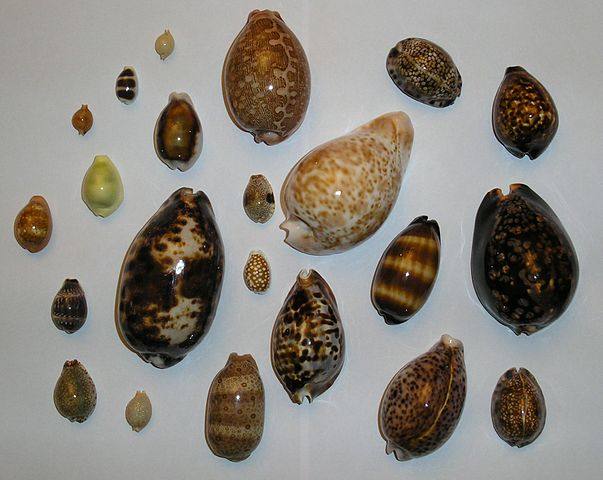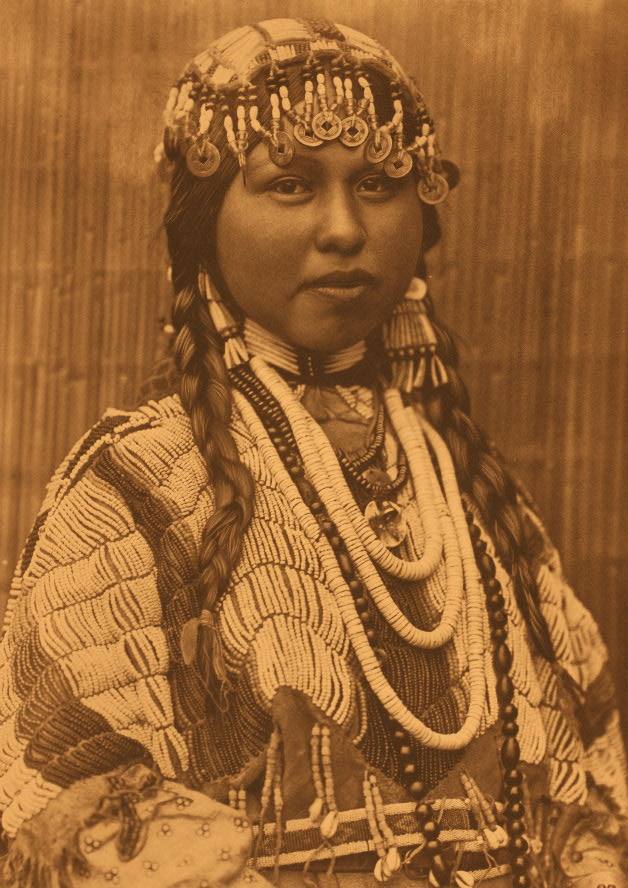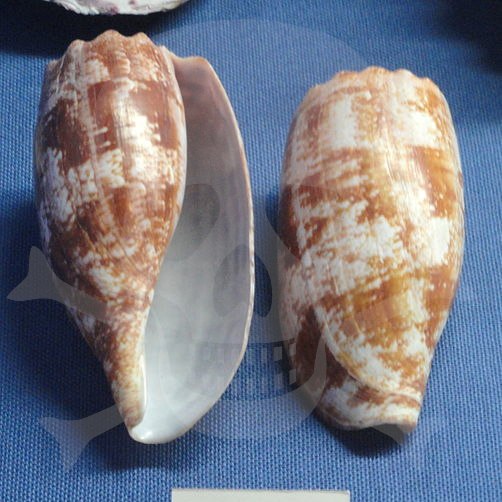settings
Ulysses vocabulary
1289 vocabulary words, including people, places, music, artists, etc.
help & settings
[x]
-
cowrie
-
► definition
Definition:a family of common sea snails with a shiny, rounded egg-like shell. Historically the shells were used by some western African cultures as money and they are still fashioned into jewelry.The wampum belts of the indiginous Eastern Woodland tribes of North America were created from beads carved from seashells of an entirely different species for similar purposes. photo: by user:Bricktop, under the Creative Commons Attribution-Share Alike 3.0 Unported license.
photo: by user:Bricktop, under the Creative Commons Attribution-Share Alike 3.0 Unported license. photo 2: by Edward S. Curtis [Public domain]Please don't confuse this with the "Conus geographus" which is a common, innocent-looking predatory cone snail and the most venomous animal in the world. They may wash up on some beaches in India, the Pacific and parts of Africa. If found, leave them alone!
photo 2: by Edward S. Curtis [Public domain]Please don't confuse this with the "Conus geographus" which is a common, innocent-looking predatory cone snail and the most venomous animal in the world. They may wash up on some beaches in India, the Pacific and parts of Africa. If found, leave them alone! photo: By Daderot, CC0, https://commons.wikimedia.org/w/index.php?curid=23302947
photo: By Daderot, CC0, https://commons.wikimedia.org/w/index.php?curid=23302947
► uses
Uses:
She was a vision in cowries: they rattled from her wrists, were strung through her curled dreadlocks, and looped around her neck.
Chimamanda Ngozi Adichie. Americanah, p.415 (2013)
---
Unoka was, of course, a debtor, and he owed every neighbour some money, from a few cowries to quite substantial amounts.
Chinua Achebe. Things Fall Apart, p.4 (1958)
---
I was nine or ten most people used plastic cards. Not for the groceries though, that came later. It seems so primitive, totemistic even, like cowry shells.
Margaret Atwood. The Handmaid’s Tale (1985)
---
The natives of Ardrah, in West Africa, use small cords, each knot in which has a meaning; and among the Jebus, the objects knotted into strings tell their separate tale, cowrie shells placed face to face denoting friendship; an arrow, war; and so forth.
---
And now his strongroom for the gold. Stephen’s embarrassed hand moved over the shells heaped in the cold stone mortar: whelks and money cowries and leopard shells: and this, whorled as an emir’s turban, and this, the scallop of saint James. An old pilgrim’s hoard, dead treasure, hollow shells.
James Joyce. Ulysses

